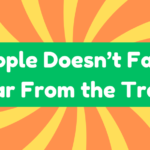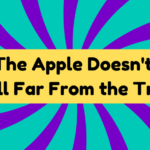The phrase "by far" means something is considerably superior or distinct compared to others. Its origin traces back to the 16th century, where it was used to express size or quality differences. You might say, "She is by far the most talented singer in the competition," to emphasize her clear advantage. Common collocations include "the best option" and "the most talented." Its relevance today lies in its ability to clarify communication, helping people navigate choices more effectively. This expression has stood the test of time, reflecting a continued need for precise comparisons in conversation. You might find even more interesting insights ahead.
Synonyms
When you want to express significant superiority or difference in a straightforward way, several synonyms for "by far" can come in handy. Understanding these alternatives can sharpen your communication, especially when making superiority comparisons or noting notable distinctions. Here are some options:
- Easily – Suggesting something's a clear leader.
- Decidedly – Implying a strong contrast or choice.
- Undoubtedly – Conveying definite superiority.
- Far and away – Emphasizing a safe distance in quality.
- Hands down – Clearly asserting the best option.
Using these terms not only enhances clarity but also enriches your dialogue. They help to capture the essence of what you're trying to convey while keeping your language fresh and innovative. Don't settle for the ordinary; explore these expressions for more impactful communication.
Example of Sentences
Exploring the use of "by far" in sentences can really illustrate its impact and utility in communication. Here are some example phrases to reflect upon:
- "She is by far the most talented singer in the competition."
- "This new model is by far the best smartphone on the market."
- "He is by far the most experienced member of the team."
- "He is by far the most qualified candidate for the job."
- "The final episode was by far the most exciting of the entire series."
These examples showcase how context usage shapes meaning. When you deploy "by far," you're not just making a comparison—you're asserting a clear distinction. This phrase adds weight to your statements, making it essential for effective communication in competitive scenarios.
Origin
The expression "by far" traces its roots back to the 16th century, emerging as an idiomatic phrase often used to highlight substantial differences, particularly in distance. Its initial usage focused on physical comparisons but evolved over time, reflecting a broader linguistic evolution. Understanding its historical context adds depth to how we use it today.
| Time Period | Usage Example | Meaning |
|---|---|---|
| 16th Century | "This town is by far larger." | Comparison of size |
| 17th Century | "He is by far the best." | Superiority in quality |
| 18th Century | "This method is by far easier." | Ease of process |
| 19th Century | "She is by far the most talented." | Exceptional skill |
| 20th Century | "It's by far the best option." | Clear choice in evaluation |
This transformation shows how language adapts and enriches our communication.
Collocations
Understanding the historical context of "by far" enriches your appreciation of its usage and application today. It's essential to recognize that collocation matters. You'll often find "by far" paired with phrases like:
- "the best option"
- "the most talented"
- "the furthest distance"
- "the easiest solution"
- "the clearest choice"
These collocations turn typical comparisons into vivid expressions, emphasizing significant differences. However, be cautious: while these idiomatic expressions enhance your language, they can also become clichéd if overused. Endeavor to maintain originality in your speech and writing; relying too heavily on familiar phrases might dilute your message. Embrace the potential of "by far" in innovative contexts, but always be mindful of its effectiveness in creating impact.
How to Use in Everyday Language
In everyday conversations, you can easily incorporate "by far" to emphasize your point when making comparisons. This idiomatic phrase adds weight and clarity, ensuring your statements stand out. For example, when discussing movie preferences, say, "That film was by far the best of the year," to underline your opinion.
Understanding contextual usage can improve your communication; it helps avoid vague statements. It's a way to emphasize superiority or preference convincingly. Be cautious, though—using "by far" too often may dilute its impact. Instead, select moments where it truly highlights a significant distinction. This way, you maintain the strength of the phrase while elevating your conversations, showing you recognize the nuances of comparison in daily discussions.
Why Is It Still Relevant Today?
By far remains relevant today because it captures our need for clear distinctions in an increasingly complex world. Its cultural significance shines through in contemporary usage, helping you navigate a sea of choices. In conversations about products, skills, or performances, "by far" highlights what truly stands out, preventing confusion. However, you might question why this phrase persists in our rapidly evolving language; after all, isn't everything up for debate? The phrase maintains its power because it provides concrete comparisons amid subjective opinions, fostering clearer communication. In a time where ambiguity runs rampant, using "by far" adds weight to your assertions, sharpening your point. Embracing such clarity can drive innovation, making your discussions more impactful and informed.







